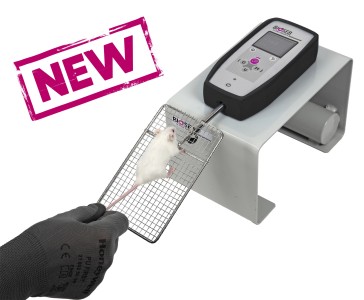Authors
AL Serrano, P Muñoz-Cánoves
Lab
Department of Experimental and Health SciencesPompeu Fabra University (UPF), CIBER on Neurodegenerative diseases (CIBERNED)BarcelonaSpain
Journal
Myofibroblasts
Abstract
Fibrosis in skeletal muscle is the natural tissue response to persistent damage and chronic inflammatory states, cursing with altered muscle stem cell regenerative functions and increased activation of fibrogenic mesenchymal stromal cells. Exacerbated deposition of extracellular matrix components is a characteristic feature of human muscular dystrophies, neurodegenerative diseases affecting muscle and aging. The presence of fibrotic tissue not only impedes normal muscle contractile functions but also hampers effective gene and cell therapies. There is a lack of appropriate experimental models to study fibrosis. In this chapter, we highlight recent developments on skeletal muscle fibrosis in mice and expand previously described methods by our group to exacerbate and accelerate fibrosis development in murine muscular dystrophy models and to study the presence of fibrosis in muscle samples. These methods will help understand the molecular and biological mechanisms involved in muscle fibrosis and to identify novel therapeutic strategies to limit the progression of fibrosis in muscular dystrophy.
BIOSEB Instruments Used
Grip strength test (BIO-GS3)
Source :
https://link.springer.com/protocol/10.1007/978-1-0716-1382-5_24

 Douleur - Allodynie/Hyperalgésie Thermique
Douleur - Allodynie/Hyperalgésie Thermique Douleur - Spontanée - Déficit de Posture
Douleur - Spontanée - Déficit de Posture Douleur - Allodynie/Hyperalgésie Mécanique
Douleur - Allodynie/Hyperalgésie Mécanique Apprentissage/Mémoire - Attention - Addiction
Apprentissage/Mémoire - Attention - Addiction Physiologie & Recherche Respiratoire
Physiologie & Recherche Respiratoire




































 Douleur
Douleur Système Nerveux Central (SNC)
Système Nerveux Central (SNC)  Neurodégénérescence
Neurodégénérescence Système sensoriel
Système sensoriel Système moteur
Système moteur Troubles de l'humeur
Troubles de l'humeur Autres pathologies
Autres pathologies Système musculaire
Système musculaire Articulations
Articulations Métabolisme
Métabolisme Thématiques transversales
Thématiques transversales Congrès & Meetings
Congrès & Meetings 